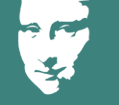| 

| Thirty Steps to the Sea | 
| Victoria and Vlad Yurashko From February 3, 2010. Guelman Projects on Malaya Polyanka 7/7-5 From February 3, 2010. Guelman Projects on Malaya Polyanka 7/7-5 |
| | Vika Yurashko was born in Lugansk Region, Ukraine (1968). Studied at Kharkiv State Academy of Design and Arts (1996-2002). Scholarship of the Cultural City Network (CCN) by order of the City of Graz, Austria (2001).
Vlad Yurashko was born in Poltava, Ukraine (1970). Studied at Kharkiv State Academy of Design and Arts (1996-2002). Scholarship of the Cultural City Network (CCN) by order of the City of Graz, Austria (2001).
Live and work in Moscow (since 2008).
Although Vika and Vlad Yurashko have de facto moved to Moscow from the Crimea, their artistic formation took place in Kharkiv, where they spent a large part of their professional lives. In terms of its cultural importance, Kharkiv is currently second only to Kiev in Ukraine – and even then only in the quantity of its contemporary artists, and not in their quality. The enormous influence of Boris Mikhailov on Kharkiv artistic circles means that, to this day, photography is still the dominant form of art there – even though the city can also boast many equally exciting events in the realms of painting. For example, around ten years ago, there was an attic gallery run along the same lines as the gallery on Tryokhprudny in Moscow, i.e. created and managed by artists (in this case, Sergei Bratkov, who was at that time a painter).
So the Yurashkos were naturally, for some time, influenced by Boris Mikhailov. This was particularly evident in their Matrosov project (2004), which combined photography, videos and painting. Vlad says that they wanted to develop the theme of "expressive and sensual folly, reflected in the bloody and dirty souls of the people."
The couple have also worked on purely photographic projects. In the course of their numerous photo sessions and experiments, they hit upon an effective device, which seemed to possess great semantic potential. This was the photocollage. The Red Series (2001) was formed from photographs of the identification numbers of tanks and carriages, appearing through images of the heroes of everyday life.
After ten years in Kharkiv, Vika and Vlad Yurashko embarked on a radical experiment. They moved to the Crimea, where, in the absence of any local artistic environment, they dedicated themselves to painting. Over four years, they created several series, including For Export (2006) and Opening of the "Russia Goodbye" Fountain (2007).
In these works, the artists continued to investigate the painterly nature of the image – which they unequivocally regarded as media and photographically virtual. Their voluntary cultural isolation contributed to the appearance of a biting satire and the desire to disclose the squalid, monotonous and stereotypical aspects of the human manifestations of their heroes.
Sometime after moving to Moscow, such moods gave way, on the one hand, to a nostalgia for free natural space. On the other, the artists abandoned the attempt to include a concrete denunciatory message in their paintings. They began to approach painting more analytically, trying to maintain a certain distance from the image itself.
The name of the project currently on show at our gallery describes the device employed by the artists in their quest for an adequate visual incarnation of the concept of the "sea." The sea becomes the symbol of a universum as such – or of eternal nature which, in the words of Boris Pasternak, "brings to naught" the metrics of the life and cognitive efforts of the little man.
The artists move towards the "sea" in two ways. Using their fingers, they blindly seek an image among the letters painted in oil on canvas, which are washed away by this movement, assuming a wavy pattern. They also find "waves" among the chance runs of paint splashing across the edge of the stretcher. Abstract painting is thereby interpreted as a chance and independent phenomenon, pouring into the gaps and cracks of human practice.
| | 

|
|





